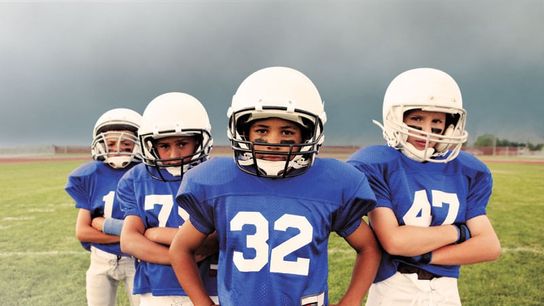The cover story in this week's TIME magazine is an issue we've written about a lot on this site: the trend of specialization in youth sports.
Written by Sean Gregory, the story focuses on the issue on both ends -- the kids and families devoting their lives to one sport, and the big money pouring in that only attracts more kids and families.
Gregory finds a number of kids -- all younger than 13 -- that regularly travel multiple hours each way just to practice with their travel teams. But those kids pale in comparison to 10-year-old Joey Erace, a New Jersey native who plays on travel baseball teams in Texas and California and happens to have 24,000 followers on Instagram. Here's how the piece opens:
Joey Erace knocks pitch after pitch into the netting of his $15,000 backyard batting cage, the pings from his metal bat filling the air in the south New Jersey cul-de-sac. His private hitting coach, who’s charging $100 for this hour-long session, tells Joey to shorten his stride. He’s accustomed to such focused instruction: the evening batting practice followed a one-on-one fielding lesson in Philadelphia earlier in the day, which cost another $100.
On the other end of that spectrum is the big money. Big, big money. There is, for instance, a youth sports logistics and analytics firm that offices out of the Dallas Cowboys' compound in Frisco, Texas, called Blue Star Sports -- see the connection? -- that has attracted $200 million in funding over the past 15 months, with the NFL's official investment arm, the Cowboys themselves and Bain Capital (co-founded by Mitt Romney) among its investors. Dick's Sporting Goods, Time, Inc., and Steph Curry have also invested in similar companies.
Meanwhile, cities across the country are throwing tens of millions of dollars at building sports mega-complexes, aiming at attracting families to spend their days at their open-year-round fields and their nights at their restaurants and hotels. “We wondered, Is it conceivable to create an industry around family travel sports?” Westfield, Ind., mayor Andy Cook said after plunking down $70 million for a complex.
And then in the middle is the group it's supposed to be about -- the kids. What affect has this had on them?
The average number of sports played by children ages 6 to 17 has dipped for three straight years, according to the Sports & Fitness Industry Association. In a study published in the May issue of American Journal of Sports Medicine, University of Wisconsin researchers found that young athletes who participated in their primary sport for more than eight months in a year were more likely to report overuse injuries.
Intense specialization can also tax minds. According to the American Academy of Pediatrics, “burnout, anxiety, depression and attrition are increased in early specializers.” The group says delaying specialization in most cases until late adolescence increases the likelihood of athletic success.
Other consequences are more immediate. As expensive travel teams replace community leagues, more kids are getting shut out of organized sports. Some 41% of children from households earning $100,000 or more have participated in team sports, according to the Sports & Fitness Industry Association. In households with income of $25,000 or less, participation is 19%.
None of this is new, at least to our audience. A 2014 study found that the more parents spend on sports, the less, on average, their kids enjoyed them. NCAA research also found that 43 percent of scholarship football players -- and nearly 40 percent of basketball and baseball players -- regret not spending more time playing other sports growing up.
There's one factor driving all this spending, on both sides: parents' (noble) desire to secure their Johnny or Suzy a slice of the $3 billion scholarship pie. But the desire to chase that rainbow can end in disaster for both sides.
The odds are not in anyone’s favor. Only 2% of high school athletes go on to play at the top level of college sports, the NCAA’s Division I. For most, a savings account makes more sense than private coaching. “I’ve seen parents spend a couple of hundred thousand dollars pursuing a college scholarship,” says Travis Dorsch, founding director of the Families in Sport Lab at Utah State University. “They could have set it aside for the damn college.”
